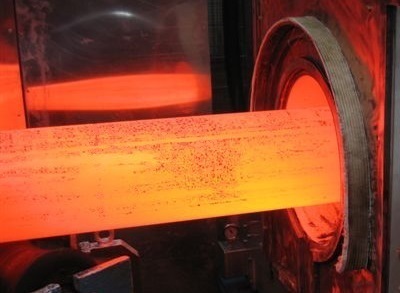
Heat treatment is a group of industrial, thermal, and metalworking processes used to alter the physical and sometimes chemical properties of a material. Heat treatment involves the use of heating or cooling (usually to an extreme temperature) to achieve desired results, such as hardening or softening of the material. The heat treatment process allows the material to be machined, and once the metal has formed the desired shape, the heated metal is quickly cooled. Rapid cooling makes the metal harder and less brittle. Heat treatment techniques include Quenching, Annealing, Tempering, Nitriding.
Quenching
Quenching is the rapid cooling of the workpiece in water, oil, or air to obtain certain material properties. Quenching reduces the grain size of metal and plastic materials, thereby increasing their hardness. For example, cast steel has a uniform layered crystal structure that can be transformed into a harder structure by heating the grains and cooling them quickly
Annealing
Annealing can change the physical (and sometimes chemical) properties of a material to increase its ductility and reduce its hardness, making it easier to process. It involves heating the material above its recrystallization temperature, keeping it at the right temperature for the right amount of time, and then cooling it. For example, when a material such as steel is to be annealed, it is heated (usually until it shines) for a period of time and then cooled slowly in still air to room temperature. Copper, silver, and brass can be cooled slowly in the air or quickly by quenching in the water. In this way, the metal is softened and can be prepared for further work.
Tempering
Tempering is used to improve the toughness of iron-based alloys. Tempering is usually done after quenching to reduce some of the excess hardness by heating the metal below the critical temperature for a certain period of time and then cooling it in still air. The exact temperature determines the amount of hardness be removed and depends on the specific composition of the alloy and the desired properties in the final product.
Nitriding
Nitriding is a heat treatment process that diffuses nitrogen onto a metal surface to form a surface hardening. These processes are most commonly used on high-carbon, low-alloy steel. Nitriding is also used for medium and high carbon steel, titanium, aluminum, and molybdenum.
The heat treatment processing material is for the following processing can be carried out smoothly
Heat treatment is usually used to change or enhance the structure of a material by heating and cooling. It has many advantages, including:
It changes the physical (mechanical) properties of the material and facilitates other manufacturing processes.
It relieves stress and makes the parts easier to machine or weld.
Increase strength to make the material malleable or more flexible.
Introduces wear resistance (hardness) characteristics, both on the surface and right through the part.
Improve brittleness. Some metals can become brittle or brittle when exposed to certain environments, so they need to be treated to overcome this problem.
The electromagnetic properties of metals can be improved, which will improve their compatibility with other materials.
